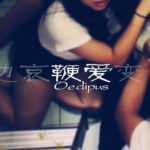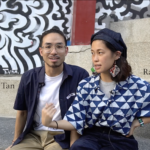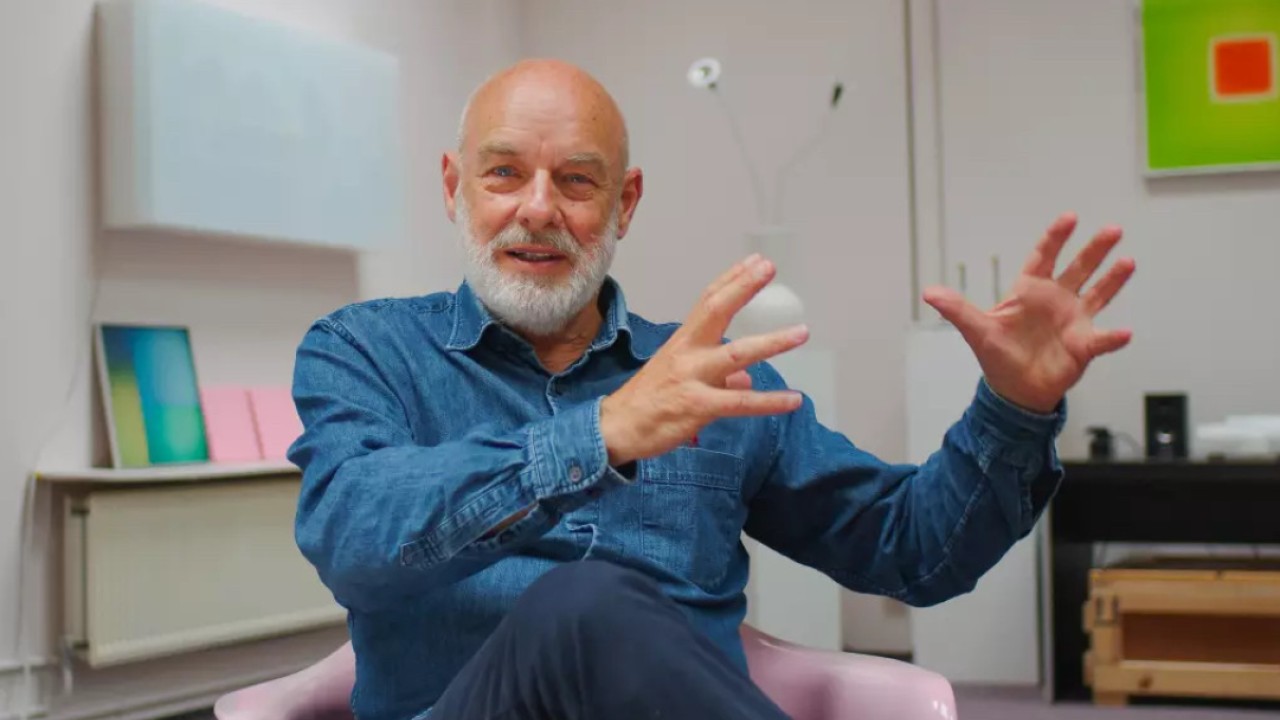Two Little White Piles, Autumn 1980, Karluv Most, Manesuv Most, Prague, 1980
1980 - Photography (Photography)
29,7 x 21,3 cm
Jiri Kovanda
Kovanda’s street interventions are always documented according to the same format as the actions: a piece of A4 paper, a typewritten text giving a precise location and date, and a photograph. Contrarily to the actions, he took the photographs himself. One of the rules he stuck to in his artistic practice was to always use material at his disposal, a real economy of means. Since he worked in the Prague National Gallery store between 1977 and 1995, he was able to use left-over art handling materials like string, paper, wooden wedges and so forth. Most interventions tended to be small in scale and ephemeral, with no particular audience since they occurred outside the art gallery space (certainly until the late 1990s). The white piles on two parallel bridges are bound to disappear. This poetic installation in urban settings is given two different perspectives, one photograph being a close-up. Kovanda states that: “They were often white… Maybe it had something to do with that out of place quality I was talking about. On the street, for example, the color white seems rather artificial. It provides a certain contrast.”
Jiri Kovanda was born in 1953 in Prague, Czech Republic. He lives and works in Prague.
Colors:
Other related works, blended automatically
» see more
Related works sharing similar palette
» see more

© » KADIST
Hikaru Fujii
2020The film The Anatomy Classroom is part of a research project developed by Hikaru Fujii around objects and artifacts evacuated from the Futaba Town Museum of History and Folklore, which is located in the “difficult-to-return zone” since the Fukushima Daiichi nuclear accident...

© » ARTS EQUATOR
Weekly Picks: Singapore (24 - 30 September 2018) | ArtsEquator Thinking and Talking about Arts and Culture in Southeast Asia Weekly To Do September 25, 2018 鞭爱 Oedipus by Toy Factory Productions Toy 肥料厂 , NOWPlaying@17, 17A Smith Street, 21, 22, 28, 29 Sep 2018 鞭爱 Oedipus by Toy Factory Productions presents the case of a senseless murder where a severely disabled man Wang Jia Hao has whipped his 50 year old mother to death...

© » ARTS EQUATOR
The working processes of artists: ScRach MarcS | ArtsEquator Thinking and Talking about Arts and Culture in Southeast Asia Articles September 6, 2019 In this video, LASALLE students Heng Wei Ting and Syarifuddin Bin Sahari speak to dancers Rachel Lee and Marcus Tan, also known as ScRach MarcS, on the intricacies of street dance in Singapore, including its acceptance as an art form, and how Singapore’s cultural make-up affects the scene...

© » SOUTH CHINA MORNING POST
Brian Eno, musician and producer, on AI-driven documentary Eno and why he doesn’t trust Elon Musk and Mark Zuckerberg with the technology | South China Morning Post Advertisement Advertisement Sundance Film Festival + FOLLOW Get more with my NEWS A personalised news feed of stories that matter to you Learn more Brian Eno, influential musician and producer who worked with Roxy Music, David Bowie, Talking Heads, Devo and U2, in a still from the documentary “Eno” about his life and career...
Other works by: » Jiri Kovanda
» see more

© » KADIST
Jiri Kovanda
1980Kovanda’s street interventions are always documented according to the same format as the actions: a piece of A4 paper, a typewritten text giving a precise location and date, and a photograph...

© » KADIST
Jiri Kovanda
1979This ephemeral installation by Jirí Kovanda, documented in the same way as his performances with a photograph and a text, belongs to a body of works that took place in his apartment/studio...

© » KADIST
Jiri Kovanda
Kovanda’s ‘discreet’ actions (leaving a discussion in a rush, bumping into passers-by in the street, making a pile of rubbish and scattering it, looking at the sun until tears come…) are always documented according to the same format: a piece of A4 paper, a concise typewritten text, and sometimes a photograph taken by someone else...
Related works found in the same semantic group
» see more

© » KADIST
Javier Castro
2008In the video Negro sobre Negro (Black on Black) all we see is a completely black screen on a monitor that is recessed into a wall, also painted black...

© » KADIST
Javier Castro
2014In the video Blanco sobre Blanco (White on White) , we see a white man appearing in a white screen embedded into a white wall— alluding to Malevich’s White on White series...

© » KADIST
Marcelo Cidade
2006This series of photographs reflects Marcelo Cidade’s incessant walks or drifting through the city and his chance encounters with a certain street poetry like the Surrealists or Situationists before him...


